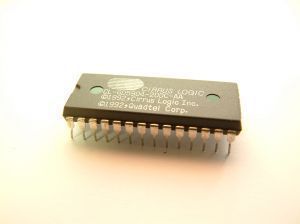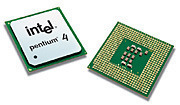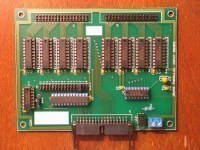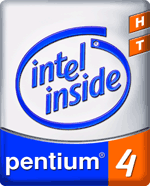A microchip, commonly called the integrated circuit, is a tiny electronic circuit. It is made up primarily of semiconductor devices. For the most part, these small microchips are used in nearly every type of electronic device known to man. As the years have gone on from their creation in the late 50s and early 60s, the microchip has become much smaller and more inexpensive to make. Because of this, it has allowed more users to gain access to greater types of electronics.
The History of the Microchip
In 1968, Jack Kilby created a microchip using Germanium. He described his device as a "body of semi-conductor material…wherin all the components are completely integrated." However, because he had used Germanium, there were some problems with the microchip. Six months after Kilby's creation, Robert Noyce created a microchip that relied on Silicon as the semiconductor. The age of the silicon chip had begun. While Kilby technically created the first chip, neither men had a problem sharing the title "co-inventor" of the microchip.
How is a Microchip Made?
To begin with, a silicon wafer is laid down and then covered in silicon dioxide. Photoresist, a photosensitive chemical, is then placed on top of the silicon dioxide. The photoresist allows for UV light to get through onto the safer in a certain design. This allows for the silicon to dry and harden. Then they take gas and etch out the the soft areas that are remaining on the wafer. This process is done over and over again.
Intel vs. AMD
The biggest battle that is seen today over the microchip is the one between Intel and AMD. Intel is known for their Pentium processor as well as their current i7 processor. On the other hand, AMD is known for their Athlon processor. Both provide a considerable amount of power, but which is better is typically up to the user.
The Size of a Microchip
A microchip is, as the name suggests, a very small chip. When it was first created, it was large and it had one transistor, three resistors and one capacitor. It was the size of an adult's pinky. That was Kilby's 1958 microchip. In today's standards, the average microchip might be as small as a penny and will have as many as 125 million transistors. In other words, the microchip has shrunk in physical size, but it has grown in considerable size in regard to the number of transistors that are on the microchip. This has made computing so much faster.




IQ Computer Services
Computers continue to speed up. People don’t all need that extra speed. This fact makes it increasingly affordable to buy used laptops or desktop computers because they are fast enough to do the tasks required by average home users.